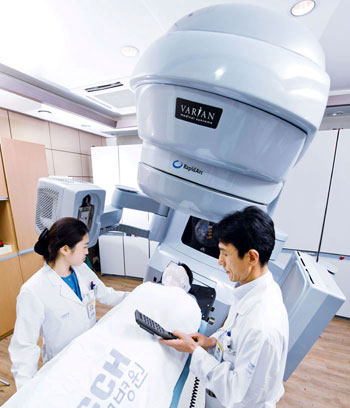
A cancer patient is receiving radiation therapy.
Korean researchers have received international attention as they recently developed new technologies for cancer treatment.
A research team led by Dr. Hwang Sang-Gu of the Korea Institute of Radiological & Medical Sciences first identified a factor which hinders radiation therapy from killing cancer cells. The team also introduced a new technology that can control that factor, HRP-3 protein, while opening the possibility of developing new radiation therapy.
While the effect of radiation therapy on cancer patients can vary between individuals, the problem lies in the fact that nobody can be sure about the treatment results until after they have received therapy.
In a radiation test carried out on patients who suffer from lung cancer, the team found a lot of active HRP-3 protein inside the undamaged cancer cells. When cancer cells receive radiation, they are killed by increased active oxygen inside them. But the HRP-3 removes active oxygen and prevents the cancer cells from being damaged. So, based on this test, the researchers found that HRP-3 protein acts like a radioresistant biomarker and plays an important role in dividing nerve cells, and hampers the effect of radiation therapy on lung cancer.

Dr. Hwang Sang-Gu of the Korea Institute of Radiological & Medical Sciences
The team also made HRP-3 knockdown, which controls HRP-3 protein, and injected it into cancer cells. They proved that the cancer cells are destroyed by HRP-3 knockdown and subsequently developed a new technology to boost radiation therapy treatment. Dr. Hwang said, “If we get informed about the hereditary characteristics of cancer patients in advance, we can select cancer treatments and predict the effect of therapy.”
A U.S.-based medical science journal “Biochemical and Biophysical Research Communications” introduced the results in its July 1 edition.
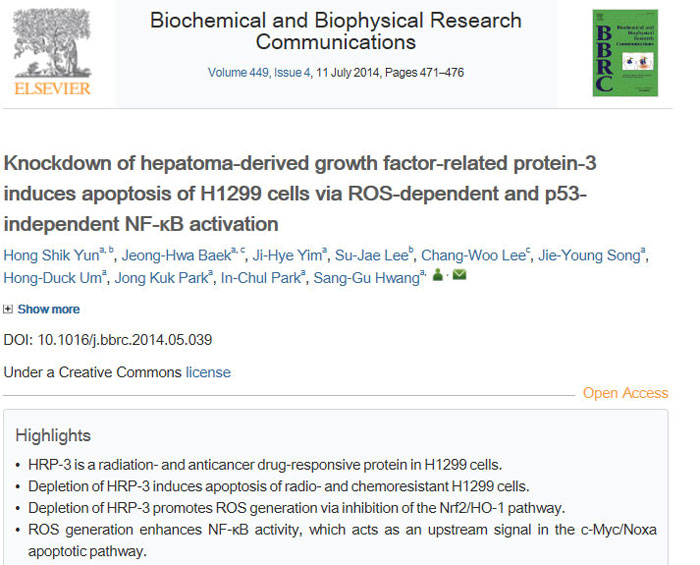
A U.S.-based medical science journal “Biochemical and Biophysical Research Communications“ introduces the results in its July 1 edition.
Meanwhile, another group of Korean researchers developed a new nano material which targets only cancer cells.
A team of Korean researchers developed a new nano material that burns only cancer cells using gold nanoparticles. The team was jointly led by Professor Lee Jeewon of Korea University and Dr. Kim Kwangmeyung of the Korea Institute of Science and Technology (KIST).
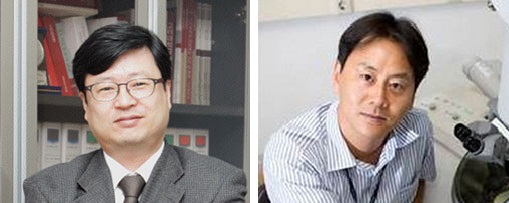
Professor Lee Jeewon of Korea University (left) and Dr. Kim Kwangmeyung of the Korea Institute of Science and Technology (KIST)
Photothermal therapy is one way to treat cancer. This treatment sends near-infrared light to the cancer-affected area and transfers gold nanoparticles in order to kill the cancer cells. To enhance the effect of the therapy, many scientists are actively engaged in research that uses gold nanoparticles larger than 20 nanometers in diameter, which can absorb near-infrared light and which have a high level of photothermal effect. Worries still remain, however, that such gold nanoparticles are neither easily released outside the body nor accurately transmitted to the cancer-affected area. This hinders the active use of gold nanoparticles in cancer treatment.
Unlike the existing nanoparticles, the new nano material developed by the research team is a combined material made from protein and gold nanoparticles. This material kills cancer cells without affecting normal cells. The research team injected the new material into the veins of tumor-bearing mice afflicted by breast cancer. They then conducted a treatment of near-infrared light therapy on the mice. Three weeks later, the researchers found that the cancer cells inside the tissues and the inner organs of the mice had been removed with no remaining gold nanoparticles. This is because the surface of the new nanoparticles uses both a target peptide, which induces cancer cells, and many small gold dots, which can be easily released outside the body.
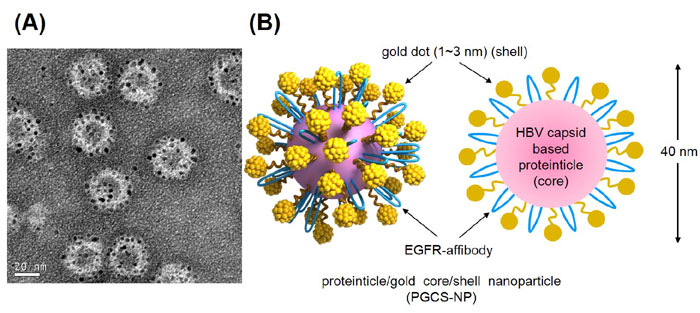
The newly developed nanoparticles affect only cancer cells. They are covered with a peptide which targets cancer cells and many gold dots smaller than 3 nanometers in diameter.
Professor Lee said, “The newly developed nanoparticles maximize the effect of photothermal therapy. It will also give a clue in solving how to treat human organs and tissues where gold nanoparticles have accumulated inside the boy.”
The results were published in an international academic journal “Advanced Materials” on July 8.
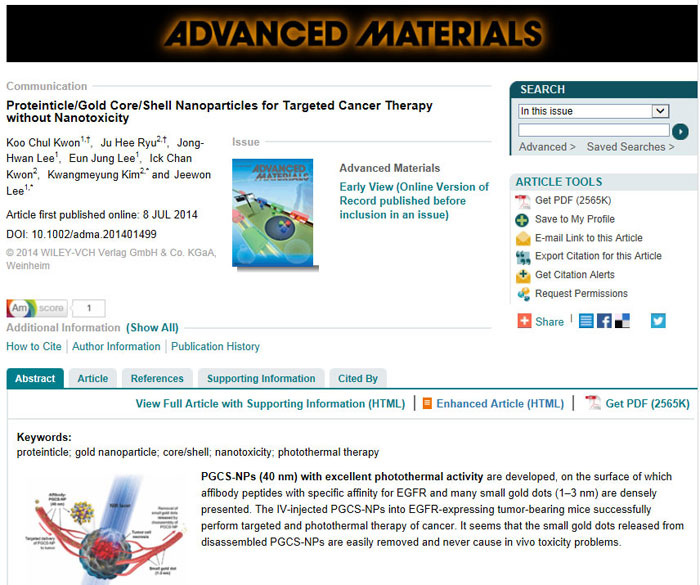
An international academic journal “Advanced Materials” publishes the development of the new nanoparticles on July 8.
By Yoon Sojung
Korea.net Staff Writer
arete@korea.kr